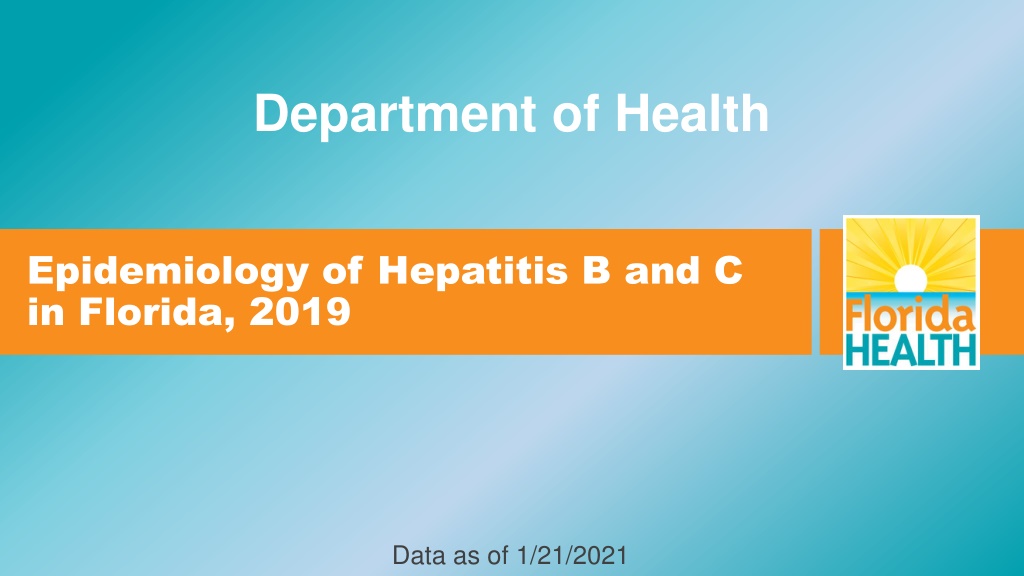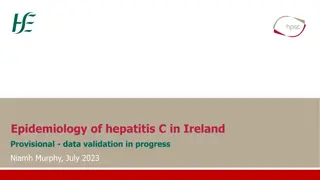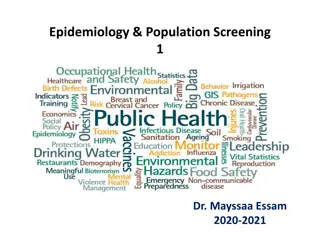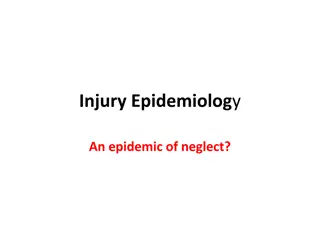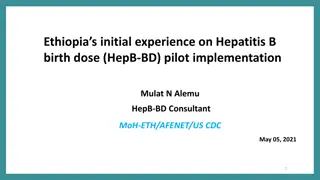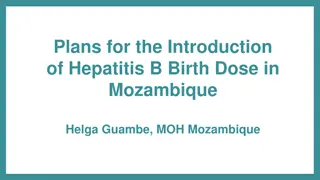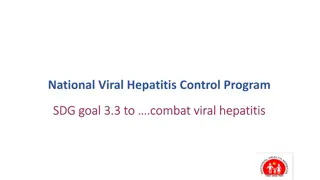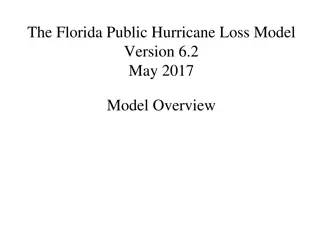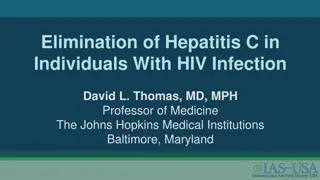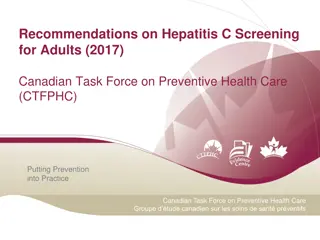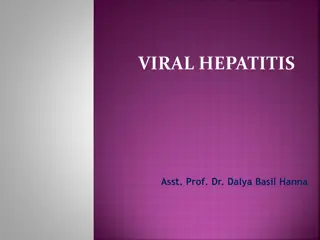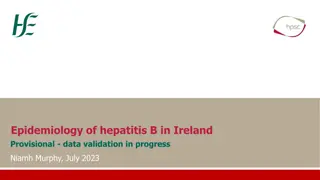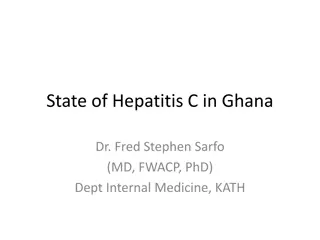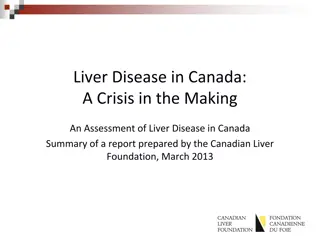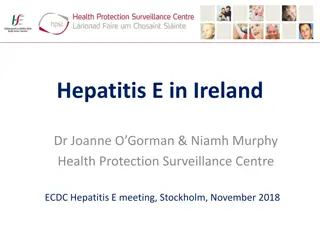Epidemiology of Hepatitis B and C in Florida: 2019 Data Analysis
The Department of Health in Florida has released the 2019 data on the epidemiology of Hepatitis B and C as of January 21, 2021. The report includes information on acute and chronic cases, technical notes on case definitions, and changes in national case definitions in 2020. Acute cases require specific clinical and laboratory criteria, while chronic cases have different classification requirements. Detailed case definitions can be found on the Department of Health's website. Data collection follows the Morbidity and Mortality Weekly Report weeks outlined by the Centers for Disease Control and Prevention. The report year may not align with calendar years. Cases reported represent those reported during the respective report year, regardless of the event date. The document also highlights reporting requirements for hepatitis cases in Florida, including changes in 2014 and 2020. Only acute cases are mandated to be investigated and interviewed in Florida, potentially leading to missing information on chronic cases. National case definition changes in 2020 for acute and chronic Hepatitis C are also discussed, including the removal of discrete onset of symptoms from acute criteria and changes in laboratory criteria.
Download Presentation

Please find below an Image/Link to download the presentation.
The content on the website is provided AS IS for your information and personal use only. It may not be sold, licensed, or shared on other websites without obtaining consent from the author. Download presentation by click this link. If you encounter any issues during the download, it is possible that the publisher has removed the file from their server.
E N D
Presentation Transcript
Department of Health Epidemiology of Hepatitis B and C in Florida, 2019 Data as of 1/21/2021
Epidemiology of Hepatitis B and C in Florida, 2019 Florida Department of Health Bureau of Communicable Diseases Viral Hepatitis Surveillance 2
Technical Notes Acute cases require clinical criteria (discrete symptom onset with jaundice or elevated liver enzymes) in addition to laboratory criteria. Cases with documented test conversion, where a negative hepatitis B virus or hepatitis C virus lab result is followed by a positive lab result, do not require clinical criteria to be classified as acute. Chronic cases do not require clinical criteria for case classification. 3
Technical Notes, continued Detailed case definitions for acute and chronic hepatitis B and C and perinatal hepatitis C can be found on the Department of Health s website: floridahealth.gov/diseases-and- conditions/disease-reporting-and-management/disease- reporting-and-surveillance/surveillance-and-investigation- guidance/index.html. Data are pulled based on Morbidity and Mortality Weekly Report weeks, as outlined by the Centers for Disease Control and Prevention, and do not necessarily align with calendar years. This is referred to as report year. 4
Technical Notes, continued Cases by year represent cases reported during that report year, regardless of event date. Someone could be reported with an acute and chronic infection in the same year or across multiple report years. Only acute cases are required to be investigated and interviewed in Florida; therefore, chronic cases may be missing demographic and risk factor information. In 2014, Florida Administrative Code (F.A.C.) Chapter 64D-3, Reporting requirements for hepatitis, changed, requiring the reporting of all positive and negative hepatitis results, including screening tests. Other requirements include all serum aminotransferase levels. 5
Technical Notes, continued In 2020, national case definition changes were implemented for acute and chronic hepatitis C. Discrete onset of symptoms was removed from acute clinical criteria, and jaundice, peak elevated total bilirubin levels 3.0 mg/dL or peak elevated serum alanine aminotransferase levels > 200 IU/L are sufficient to meet acute clinical criteria for the 2020 case definition. Additionally, the negative nucleic acid test followed by positive antibody to hepatitis C (anti-HCV) test conversion scenario was removed. 6
Technical Notes, continued Chronic cases do not include perinatal hepatitis cases and may not match data in FLHealthCHARTS.com or data slides from previous years. Perinatal hepatitis C is defined as hepatitis C among children less than or equal to 36 months of age who are not known to be exposed to the virus other than perinatally (i.e., mother-to-child transmission). Data slides represent cases of all ages unless otherwise specified. Bar heights may vary due to rounding. Data are pulled from Merlin, Florida s reportable disease surveillance system. All data are as of 1/21/2021. 7
Number of Reported Chronic Hepatitis Cases in Florida, 2012 2019 Number of Cases Chronic hepatitis B Chronic hepatitis C 35,000 30,000 25,000 19,917 19,018 20,000 15,000 10,000 4,812 4,180 5,000 0 1 2012 2013 2014 2015 2016 2017 2018 2019 1 Change to F.A.C. 64D-3, Reporting requirements for hepatitis. 8
Rates of Chronic Hepatitis in Florida, 2012 2019 Rate per 100,000 Chronic hepatitis B Chronic hepatitis C 175.0 150.0 125.0 99.5 93.6 100.0 75.0 50.0 21.9 22.6 25.0 0.0 1 2012 2013 2014 2015 2016 2017 2018 2019 1 Change to F.A.C. 64D-3, Reporting requirements for hepatitis. 9
Chronic Hepatitis B by Age Group1 Percentage of Cases 2018 N=4,763 2019 N=4,812 30% 26% 25% 25% 22% 21% 21% 21% 20% 19% 20% 15% 11% 10% 10% 5% 2% 2% 0% <20 20-29 30-39 40-49 50-59 >=60 1 Age was missing for 9 cases in 2018 and 13 cases in 2019. 10
Chronic Hepatitis B by Sex1 2018 N=4,763 2019 N=4,812 57% Male 57% 42% Female 43% 0% 20% 40% 60% 80% 100% 1 Sex was unknown for 15 cases in 2018 and 7 cases in 2019. 11
Chronic Hepatitis B by Race/Ethnicity 40% 38% Unknown 2018 N=4,763 26% 26% White 16% 17% Black 2019 N=4,812 8% 10% Hispanic 6% 5% Asian/Pacific Islander <1% <1% American Indian/Alaskan Native 0% 25% 50% 75% 100% 12
Chronic Hepatitis C by Age Group1 Percentage of Cases 2018 N=22,175 2019 N=19,917 30% 27% 25% 25% 22% 22% 20% 19% 20% 17% 16% 16% 15% 15% 10% 5% 1% 1% 0% <20 >=60 20 29 30 39 40 49 50 59 1 Age was missing for 61 cases in 2018 and 44 cases in 2019. 13
Chronic Hepatitis C by Sex1 2018 N=22,175 2019 N=19,917 64% Male 65% 36% Female 35% 0% 20% 40% 60% 80% 100% 1 Sex was unknown for 58 cases in 2018 and 33 cases in 2019. 14
Chronic Hepatitis C by Race/Ethnicity 53% 54% White 2018 N=22,175 30% 28% Unknown 7% 8% Black 2019 N=19,917 6% 6% Hispanic 3% 3% Other 1% 1% Asian/Pacific Islander <1% <1% American Indian/Alaskan Native 0% 25% 50% 75% 100% 15
Rates1 of Chronic Hepatitis by County, 2019 Chronic hepatitis B N=4,812 Chronic hepatitis C N=19,917 Rate suppressed, <5 cases 28.0 100.0 0.0 100.0 130.0 <10.0 131.1 160.0 10.0 15.0 160.1 190.0 15.1 24.0 >190.0 >24.0 1 Per 100,000 population. 16
Number of Reported Acute Hepatitis Cases in Florida, 2012 2019 Number of Cases Acute hepatitis B Acute hepatitis C 900 806 750 759 600 450 292 300 150 168 0 1 2012 2013 2014 2015 2016 2017 2018 2019 1 Change to F.A.C. 64D-3, Reporting requirements for hepatitis. 18
Rates of Acute Hepatitis in Florida, 2012 2019 Rate per 100,000 Acute hepatitis B Acute hepatitis C 5.0 3.8 4.0 3.6 3.0 2.0 1.5 0.9 1.0 0.0 2012 2013 2014 2015 2016 2017 2018 2019 1 1 Change to F.A.C. 64D-3, Reporting requirements for hepatitis. 19
Acute Hepatitis B by Age Group Percentage of Cases 2018 N=783 N=759 2019 40% 35% 35% 30% 30% 24% 25% 22% 21% 20% 18% 17% 20% 15% 10% 5% 5% 5% 1% 1% 0% <20 >=60 20 29 30 39 40 49 50 59 20
Acute Hepatitis B by Sex 2018 N=783 N=759 2019 60% Male 62% 40% Female 38% 0% 20% 40% 60% 80% 100% 21
Acute Hepatitis B by Race/Ethnicity 62% 66% White 2018 N=783 14% 13% Black 12% 10% Hispanic 2019 N=759 7% 6% Unknown 3% 4% Other 1% 1% Asian/Pacific Islander 1% 1% American Indian/Alaskan Native 0% 25% 50% 75% 100% 22
Acute Hepatitis C by Age Group 2018 N=485 N=806 2019 Percentage of Cases 35% 35% 30% 25% 22% 25% 22% 20% 19% 20% 15% 14% 13% 15% 11% 10% 5% 2% 1% 0% <20 >=60 20 29 30 39 40 49 50 59 23
Acute Hepatitis C by Sex 2018 N=485 N=806 2019 55% Male 63% 45% Female 37% 0% 20% 40% 60% 80% 100% 24
Acute Hepatitis C by Race/Ethnicity 62% White 2018 N=485 70% 12% 10% Hispanic 2019 N=806 11% 9% Black 12% 6% Unknown 1% 1% Asian/Pacific Islander 0 <1% American Indian/Alaskan Native 0% 25% 50% 75% 100% 25
Rates1 of Acute Hepatitis by County, 2019 Acute hepatitis B N=759 Acute hepatitis C N=806 Rate suppressed, <5 cases Rate suppressed, <5 cases 0.0 0.0 0.1 3.0 0.1 3.0 3.1 5.0 3.1 5.0 >5.0 >5.0 1 Per 100,000 population. 26
Drug Use was the Most Commonly Reported Risk Factor for Acute Hepatitis Cases in 2019. Acute hepatitis B Acute hepatitis C 25% Injection Drug Use 38% 23% Non-Injection Drug Use 28% 14% Incarcerated >24 Hours 16% 7% Other Exposure to Blood 7% 9% Incarcerated >6 Months 6% 6% Recent Tattoo 3% 3% Recent Hemodialysis 3% 3% Recent Dental Work 2% 0% 10% 20% 30% 40% 50% Range of missing/unknown risk factors is 31 57% for acute hepatitis B and 35 69% for acute hepatitis C. 27
Perinatal Hepatitis C in Florida, 2016 2019 Number of Cases 50 40 34 30 24 20 10 0 2 1 2016 2017 2018 2019 1 Perinatal hepatitis C became reportable in Florida. 2 Perinatal hepatitis C case definition was updated to include a suspect case classification and age was increased from 2 years to 3 years. In 2019, there were 2 suspect cases reported. 28
Perinatal Hepatitis C by Age and Sex 2018 2019 Percentage of Cases 60% N=45 N=24 54% 49% 53% 50% Male 40% 54% 29% 29% 30% 22% 17% 20% 47% 10% Female 46% 0% <12 months 12-23 months 24-36 months 0% 20% 40% 60% In 2019, there were 2 suspect perinatal hepatitis C cases reported. 29
Perinatal Hepatitis C by Race/Ethnicity 51% White 63% 33% Unknown 21% 2018 N=45 13% Other 4% 2% Hispanic 8% 2019 N=24 0 Asian/Pacific Islander 4% 0 0 American Indian/Alaska Native 0% 25% 50% 75% 100% In 2019, there were 2 suspect perinatal hepatitis C cases reported. 30
The Number of Women of Childbearing Age with Acute or Chronic Hepatitis C Increased by 16% from 2012 to 2019. Women 15 44 years old with any hepatitis C infection Children <3 years old with any hepatitis C infection 65 4,007 3,456 30 2012 2019 2012 2019 These charts represent persons with any reported hepatitis C infection and may not match data in FLHealthCHARTS.com or data slides from previous years. FLHealthCHARTS.com data represent counts of cases and not counts of persons. 31
Hepatitis Surveillance Resources FLHealthCHARTS: flhealthcharts.com Case Definitions: cdc.gov/nndss/conditions/search/hepatitis/ Serology Training: cdc.gov/hepatitis/resources/professionals/training/serology/train ing.htm 32
Hepatitis Prevention Resources Hepatitis Resource Guide: floridahealth.gov/diseases-and- conditions/hepatitis/_documents/docs-for-hepatitis-resource- page/_documents/hepatitis-resource-guide-general- resources.pdf Hepatitis General Information: floridahealth.gov/diseases-and- conditions/hepatitis/hepatitis-general-information.html Hepatitis Education Materials: floridahealth.gov/diseases-and- conditions/hepatitis/education-materials.html 33
Hepatitis Prevention Resources, continued Hepatitis Fact Sheets English: floridahealth.gov/diseases-and- conditions/hepatitis/_documents/docs-for-hepatitis-resource-page/hep- abc-chart-english.pdf Spanish: floridahealth.gov/diseases-and- conditions/hepatitis/_documents/educational-materials/_documents/hep- abc-chart-spanish.pdf Haitian Creole: floridahealth.gov/diseases-and- conditions/hepatitis/_documents/docs-for-hepatitis-resource- page/_documents/abc-chart-creole.pdf For more prevention resources, visit flahepatitis.org 34
Viral Hepatitis Surveillance Data Contacts Kati Touchstone Hepatitis Surveillance Epidemiologist Kati.Touchstone@flhealth.gov 850-901-6982 Tom Bendle Hepatitis Program Manager Thomas.Bendle@flhealth.gov 850-245-4426 Hepatitis data are also available on FLHealthCHARTS flhealthcharts.com/charts/CommunicableDiseases/default.aspx 35
